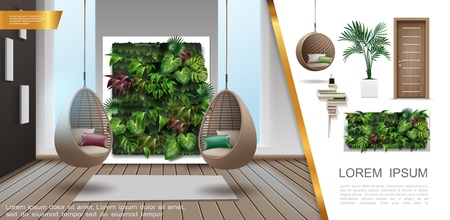1. Introduction to Mitti and Natural Materials in Indian Culture
Mitti, which means clay or earth in Hindi, is a fundamental element deeply woven into the fabric of Indian tradition and daily life. Since ancient times, Indians have utilised mitti along with other natural materials such as bamboo, jute, stone, and cow dung for various purposes. From building homes to creating utensils and even for spiritual rituals, these resources reflect a harmonious relationship between people and nature. The respect for mitti is not merely practical but also symbolic—it stands for fertility, purity, and the nurturing aspect of Mother Earth (Bharat Mata) in Indian culture. Across diverse regions of India, natural materials are integral in preserving age-old crafts and sustaining eco-friendly practices that have been passed down through generations. The legacy of using mitti and similar resources continues to shape traditional lifestyles, rituals, architecture, and art forms throughout the country.
2. Types of Traditional Indian Mitti and Natural Resources
Indias diverse landscape is home to several varieties of traditional mitti (soil) and natural resources, each offering unique benefits and cultural significance. The selection of mitti is deeply rooted in local practices, with communities choosing specific types based on the region’s geography, agricultural needs, and traditional wisdom. Here is a closer look at the primary types of Indian soil and other widely used natural materials:
Major Varieties of Indian Mitti
| Soil Type | Region | Main Uses |
|---|---|---|
| Red Soil | Southern & Eastern India (Tamil Nadu, Karnataka, Andhra Pradesh, Odisha) | Agriculture (millets, groundnuts), pottery, construction |
| Black Soil (Regur) | Maharashtra, Madhya Pradesh, Gujarat | Cotton farming, earthen floors, water storage tanks |
| Alluvial Soil | Indo-Gangetic plains (Punjab, Uttar Pradesh, Bihar, West Bengal) | Paddy cultivation, bricks for construction |
Other Notable Natural Resources Across Regions
- Bamboo: Widely used in the Northeast for scaffolding, housing frames, and handicrafts.
- Coconut coir: Common in coastal Kerala and Tamil Nadu for mats, ropes, and eco-friendly packaging.
- Lime: Used across Rajasthan and Gujarat for traditional wall plastering (lime wash) and water-proofing techniques.
Cultural Significance and Sustainable Use
The choice of mitti and complementary natural resources reflects centuries of adaptation to local environments. These materials are not only sustainable but also play a crucial role in maintaining ecological balance while preserving the aesthetic essence of Indian homes. The continued use of region-specific soils and resources demonstrates the harmony between tradition and innovation in Indian living spaces.

3. Traditional Uses in Indian Homes and Villages
In the heart of India’s rural landscape, mitti (clay) and other natural materials have been integral to daily living for generations. One of the most iconic examples is the mitti chulha, a traditional clay stove found in countless households across villages. These stoves are cherished not only for their eco-friendly construction but also for imparting a unique flavour to home-cooked food, especially rotis and curries. Another common sight is the matka, a clay water pot that keeps drinking water naturally cool even during scorching summers. Matkas are valued for their sustainability and ability to maintain water quality without electricity or refrigeration. Additionally, cow dung flooring remains prevalent in many homes, particularly in North Indian states. This age-old practice involves mixing cow dung with mud to plaster floors, which helps in repelling insects, controlling dust, and providing a natural cooling effect indoors. Such methods not only utilise locally available resources but also reflect the deep-rooted Indian ethos of living harmoniously with nature. These applications highlight how traditional wisdom continues to shape everyday life in Indian homes and villages, blending practicality with cultural significance.
4. Sustainable and Eco-friendly Advantages
Why Natural Materials Are Eco-friendly
Natural materials like mitti (clay), bamboo, jute, and cow dung have always played a significant role in traditional Indian construction and daily life. These materials are inherently biodegradable, require minimal processing, and generate less waste compared to synthetic alternatives. For example, mitti homes can be easily returned to the earth without leaving harmful residues. Additionally, sourcing these materials locally reduces transportation emissions and supports regional economies.
Importance in Sustainable Living
The use of natural materials aligns perfectly with sustainable living principles. In Indian households, the preference for mitti pots, coir mats, and mud plastered walls is rooted not just in tradition but also in their ability to regulate temperature naturally, reduce energy consumption, and maintain indoor air quality. Below is a comparison showing how natural materials outperform synthetics in sustainability:
| Material | Energy Consumption | Biodegradability | Carbon Footprint |
|---|---|---|---|
| Mitti (Clay) | Low | High | Minimal |
| Bamboo | Very Low | High | Minimal |
| Synthetic Plastic | High | Poor | High |
| Cement Concrete | Very High | Poor | Very High |
Connection to Indian Values: Jugaad and Simplicity
The eco-friendly approach of using natural materials reflects core Indian values like jugaad (creative problem-solving) and simplicity. Indians have always found innovative ways to utilise available resources efficiently—whether it’s reusing old sarees as curtains or building entire homes from local clay and thatch. The minimalist mindset encourages people to avoid excess, focus on essentials, and respect nature’s limits.
Cultural Wisdom Meets Modern Sustainability Goals
The traditional Indian lifestyle has always promoted harmony with nature. By embracing natural materials, Indians not only preserve cultural wisdom but also contribute to global sustainability efforts. This deep-rooted connection between ecological responsibility and daily practice demonstrates why India’s heritage remains relevant for modern green living.
5. Contemporary Revival and Challenges
In recent years, there has been a noticeable resurgence in the use of mitti (clay) and other natural materials across urban India. Many young homeowners, designers, and architects are increasingly embracing traditional materials for their eco-friendly properties and cultural significance. From clay pots in kitchens to terracotta tiles on modern rooftops, mitti is being reimagined with innovative designs that fit contemporary lifestyles. Urban Indians are also turning to bamboo, jute, and stone in an effort to reconnect with heritage while responding to global concerns about sustainability and climate change.
However, this revival faces several challenges. The pace of urbanization and the popularity of concrete constructions threaten to overshadow traditional practices. Many skilled artisans who once specialized in working with mitti or weaving natural fibres are now struggling due to reduced demand and lack of recognition. There is also a perception among some urban consumers that natural materials are less durable or harder to maintain compared to modern synthetic alternatives.
Despite these obstacles, various NGOs, startups, and government schemes are working towards reviving indigenous craftsmanship. Workshops and social media campaigns educate people about the health and environmental benefits of using mitti cookware or mud-based architecture. The integration of traditional techniques with modern technology is also helping make these materials more accessible and appealing to urban dwellers.
The journey towards mainstreaming mitti and natural materials in Indian cities is ongoing. While modernization presents hurdles, there is a growing sense of pride in Indias rich heritage. As awareness spreads, the hope is that future generations will cherish these traditions not just for their nostalgia but also as practical solutions for sustainable urban living.
6. Conclusion: Preserving Heritage for Future Generations
India’s rich tradition of using mitti and other natural materials is not just a reflection of its cultural identity but also a testament to the wisdom of generations. Embracing these age-old practices brings immense value, especially in today’s world where sustainability is becoming increasingly important. By integrating traditional materials like terracotta, bamboo, jute, and stone into contemporary architecture and daily life, we are not only preserving our heritage but also promoting eco-friendly living solutions.
Celebrating Indian Ingenuity
Incorporating natural elements honours the unique craftsmanship that has been passed down through families and communities for centuries. This approach fosters local economies, supports indigenous artisans, and ensures that skills such as pottery-making and mud-plastering remain relevant in modern times.
Modern Relevance of Traditional Practices
The use of mitti and other natural materials aligns with present-day needs for healthier, more sustainable living environments. These resources provide better thermal comfort, improved air quality, and a reduced carbon footprint—qualities highly sought after in smart homes and urban spaces across India.
A Call to Action
Let us continue to cherish our roots by weaving traditional techniques into new-age designs. Whether you are building a home or revamping your workspace, choosing Indian natural materials is a meaningful way to celebrate our vibrant heritage while creating a greener future for generations to come.


